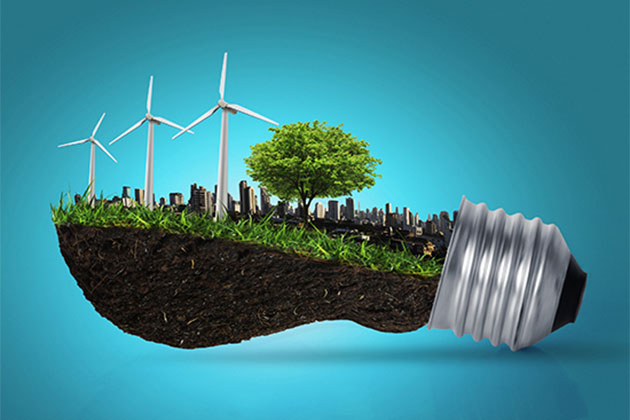Scientists have shown a new technology in which bioengineered bacteria can make cost-effective chemicals/polymers from renewable biljka izvori
lignin is a material which is a constituent of cell wall of all dry land plants. It is the second most abundant natural polymer after cellulose. This material is the only polymer found in plants which is not composed of carbohydrate (šećer) monomers. Lignocellulose biopolymers provide shape, stability, strength and rigidity to plants. Lignocellulose biopolymers consist of three main components: cellulose and hemicellulose form a framework in which lignin is incorporated as a kind of connector thus solidifying the cell wall. Cell wall lignification makes plants resistant to wind and pests and helps them from rotting. Lignin is a vast but very underutilized renewable resource of energy. Lignin which represents up to 30 percent of the lignocellulose biomass is an unexploited treasure – at least from a chemical point of view. The chemical industry depends mostly on carbon compounds for creating different products like paint, artificial fibres, fertilizers and most importantly plastic. This industry does use some renewable resources like vegetable oil, starch, cellulose etc but this comprises only 13 percent of all compounds.
Lignin, obećavajuća alternativa nafti za proizvodnju proizvoda
In fact, lignin is the one and only source of renewable on earth that contains a large number of aromatic compounds. This is of importance because aromatic compounds are generally extracted from the non-renewable source petroleum and then are used to produce plastika, paints etc. Thus, the potential of lignin is very high. In comparison to petroleum which is a non-renewable fossil fuel, lignocelluloses are derived from drvo, straw or Miscanthus which are renewable sources. Lignin can be grown in fields and forests and are generally neutral towards the climate. Lignocelluloses is being considered as a serious alternative to petroleum in past few decades. Petroleum drives the chemical industry at present. Petroleum is a raw material for many basic chemicals which are then used to produce useful products. But petroleum is non-renewable source and is dwindling, therefore focus needs to be on finding renewable sources. This brings lignin into the picture as appears to be a very promising alternative.
Lignin je pun velike energije, ali dohvat te energije je kompliciran i skup proces, pa se čak i stvara biogorivo jer je krajnji rezultat općenito vrlo visok trošak i ne može ekonomski zamijeniti "transportnu energiju" koja se trenutno koristi. Istraženi su mnogi pristupi za razvoj isplativih načina razgradnje lignina i pretvaranja u vrijedne kemikalije. Međutim, nekoliko ograničenja ograničilo je pretvorbu biljne tvari dodira kao što je lignin da se koristi kao alternativni izvor energije ili čak pokušati učiniti isplativijom. Nedavna studija uspješno je konstruirala bakterije (E. Coli) da djeluju kao učinkovita i produktivna tvornica stanica za biokonverziju. Bakterije rastu i razmnožavaju se vrlo brzo i sposobni su izdržati oštre industrijske procese. Ove informacije su kombinirane s razumijevanjem prirodno dostupnih razgradivača lignina. Rad je objavljen u Zbornik radova Nacionalne akademije znanosti SAD.
The team of researchers led by Dr Seema Singh at the Sandia National Laboratories solved three main problems that are encountered in turning lignin into platform chemicals. The first major hurdle is that bakterija E.Coli generally does not produce the enzymes which are needed for conversion. Scientists tend to solve this problem of making enzymes by adding an “inducer” to the fermentation ring. These inducers are effective but are very expensive and thus do not fit well in the concept of biorefineries. Researchers tried a concept wherein a lignin derived compound like vanilla was used as a substrate as well as an inducer by engineering the bakterija E.Coli. This would bypass the need for an expensive inducer. Though, as the group discovered, vanilla wasn’t a good choice particularly because once lignin breaks down, vanilla is produced in large quantities and it starts inhibiting the function of E.Coli i.e. vanilla starts creating toxicity. But this worked in their favour when they engineered the bakterija. In the new scenario, the very chemical that is toxic to the E.Coli is used to initiate the complex process of “lignin valorisation”. Once vanilla is present, it activates the enzymes and bacteria starts to convert vanillin into catechol, which is the desired chemical. Also, the amount of vanillin never reaches the toxic level as it gets autoregulated in the current system. The third and final problem was of the efficiency. The system of conversion was slow and passive thus researchers looked into more effective transporters from other bacteria and engineered them into E. Coli which then fast tracked the process. Overcoming toxicity and efficiency problems by such innovative solutions can help make the production of biofuel a more economical process. And, removal of an external inducer along with incorporation of auto-regulation can further optimize the biofuel-making process.
Dobro je poznato da nakon što se lignin razgradi, on ima sposobnost osigurati ili bolje reći "pokloniti" vrijedne kemikalije platforme koje se zatim mogu pretvoriti u najlon, plastiku, farmaceutske proizvode i druge važne proizvode koji se trenutno dobivaju iz nafte, koja nije -obnovljivi izvor energije. Ova je studija relevantna kao korak prema istraživanju i razvoju isplativih rješenja za biogorivo i bioproizvodnju. Koristeći tehnologiju bioinženjeringa možemo proizvesti veće količine platformskih kemikalija i nekoliko drugih novih krajnjih proizvoda, ne samo s bakterijskom E.Coli nego i s drugim mikrobnim domaćinima. Buduća istraživanja autora će se usredotočiti na pokazivanje ekonomične proizvodnje ovih proizvoda. Ovo istraživanje ima veliki utjecaj na procese proizvodnje energije i proširenje raspona mogućnosti za zelene proizvode. Autori primjećuju da bi u bliskoj budućnosti lignoceluloza definitivno trebala nadopuniti naftu, ako ne i zamijeniti je.
***
{Izvorni istraživački rad možete pročitati klikom na vezu DOI koja se nalazi u nastavku na popisu citiranih izvora}
Izvor (i)
Wu W i sur. 2018. Prema inženjerstvu E. coli s autoregulacijskim sustavom za valorizaciju lignina', Zbornik National Academy of Sciences. 115 (12). https://doi.org/10.1073/pnas.1720129115






































